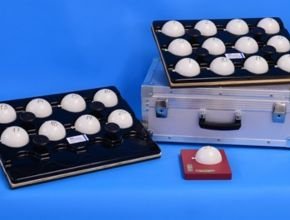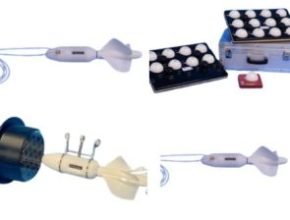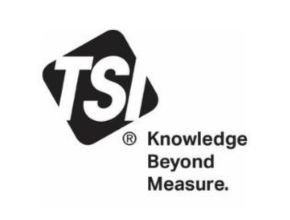About KC Denmark
KC Denmark – Current Flow Meter Measurement enjoys undertaking any task involving the design, development, co-development, manufacturing and testing of submarine instrumentation and equipment. Examples of routinely designed and manufactured equipment for flow measurement are shown below.
KC Denmark A/S is a company with more than 35 years of experience specializing in the development of various types of sampling equipment for oceanographic, environmental and pollution investigations. KC Denmark A/S is a global supplier of equipment to universities, research institutes, municipal authorities, and consulting engineers specializing in environmental and pollution affairs.
KC Denmark A/S enjoys undertaking any task involving the design, development, co-development, manufacturing, and testing of submarine instrumentation and equipment. At KC Denmark A/S we are committed to promoting and complying with the highest legal, security, and ethical standards.
KC Denmark A/S has earned its reputation for being an ethical business organization. KC Denmark’s responsibility to maintain this valuable reputation for our future. KC Denmark have established various policies and procedures to ensure that we are able to continuously meet such standards.
Product KC Denmark – Current Flow Meter Measurement
Digital Flow Meter

The flow meter is recommended for a horizontal tow of the plankton net. If lowered in a vertical position, the flow meter counts on its way down as well as when drawn back through the water column, thus causing an improper read-out. For a vertical pull you can use flow meter 23.091, which comes with the back-run stop feature.Diameter of propeller/counter body: 70/32 mm, length 185 mm, 5-digit counter; easy installation by a two-wire point connection of the nosepiece.
The construction is based on a free flooding design, so it can be used for full (unlimited) oceanographic depth.The flow meter read-out (max. value 99999) vs. water volume can be calculated using our spreadsheet allowing a quick and intuitive conversion regardless if the shape is circular, square or rectangular. Find the spreadsheet here.
Digital Flow Meter with back-run stop
The back-run stop is recommended for a vertical tow of the plankton net. When lowering the net, the flow meter does not count; it will only count when the net is drawn back through the water column. For a horizontal pull you can also use flow meter 23.090.Diameter of propeller/counter body: 70/32 mm, length 185 mm, 5-digit counter; easy installation by a triple point connection of the nosepiece.

The construction is based on a free flooding design, so it can be used for full (unlimited) oceanographic depth.The flow meter read-out (max. value 99999) vs. water volume can be calculated using our spreadsheet allowing a quick and intuitive conversion regardless if the shape is circular, square or rectangular. Find the spreadsheet here.
Digital Flow Meter for calibration purposes

The unit can be used as a reference or for calibration purposes. As standard, it comes with a non-resettable flow meter, counting the flow from the honeycomb through the tube. It is very easy to swap it with a resetable model, which will count regardless of the flow direction.
These pumps support the flow meter:
- 23.565 – Pump for microplastic, portable
- 23.570 – Plankton pump for 150 m
- 23.586 – Pump for sea lice and plankton
- 23.590 – Plankton pump for 6000 mThe flow meter read-out (max. value 99999) vs. water volume can be calculated using our spreadsheet allowing a quick and intuitive conversion. The spreadsheet is available here.
Specifications:
- Back-run stop (non-resettable
- Mechanical counter with 5 digits
- Rotor: Polyamide, PA 6.6 Nylon rotor
- Nose cone and body: POM plastic
- Gear shaft: Stainless steel main rotor
- Threshold: 20 cm/sec
- Range: 20 cm/sec to 8,0 m/sec
- Honeycomb, made of ASA, divided into 10 x 10 mm sections
- Acrylic tube with POM flange, diameter 90/84 mm
- Length of chamber: 250 mm
- Weight: 0,5 kg
FST – Hemispheres
The hemisphere method describes near-bottom flow conditions in watercourse. The method is based on a simple concept: The weight of a hemisphere exposed to a flow is moved by a given current from a reform plate. The set of hemispheres consists of 21 identical hemispheres with different specific gravity.
The modern description of the quality of running waters requires a solid understanding of physical conditions. Modern conservation of running water and restoration of nature aims at natural variation of the physical environment of running water, considering channel form, as well as discharge and bottom space sediment.

This complicates the use of traditional methods of measuring flow for example propeller instruments, well-known to be unreliable for measuring current in weeded running water or near the bottom of the stream. The hemisphere method is an attractive alternative/ supplement for a detailed evaluation of the physical environment when restoring running water, establishing spawnbanks, etc.
- The method is especially suitable if the flow forces prevailing at the stream-bottom are of interest. Field procedures for FST Hemispheres: From Statzner, B and R. Müller. 1989. Standard hemispheres as indicators of flow characteristics in lotic benthos research. Freshwater Biology 21: 445-459.
- Place the Plexiglas plane in a shallow (ideally 1,8 cm deep) horizontal pit dug in the stream bottom (Fig. 1).
- Make sure the plane is level (a slope of less than 2,5% in each direction). Place small stones under the corners in the coarse substrate to make the plane horizontal
- Place the hemispheres on the plane, one after another, noting the densest hemisphere that moved.
- The placement procedure for each hemisphere is as follows:
- Hold the hemisphere with one hand slightly above the plane with the brass wire loop facing downstream and the monofilament line loosely held by the other hand (Fig. 1).
- Bring the upstream edge of the hemisphere into contact with the plane.
- Allow the hemisphere to drop down between the fingers completely to the plane – do not press the hemisphere down onto the plane
- Slowly remove the hand from the area.
- Note the heaviest hemisphere that moves on the plane (short movements of less than 2 cm should be considered artifacts and should be neglected).
- The density of the hemispheres can be found in table 1.
Source : www.kc-denmark.dk
Read More Articles :
- Macnaught Type D PR Digital Display Flow Meter
- Macnaught M40 Series Model 1½” Mechanical Meter
- Macnaught M10 Series Model 1” Mechanical oil Meter
- Dwyer WMH Multi-Jet Hot Water Meter
- Macnaught MX19 Series Model ¾” Digital Flow Meter
- Dwyer VFLO Venturi Flowmeter with Magnehelic® Gage
- Dwyer HFO In-Line Flow Alarms





